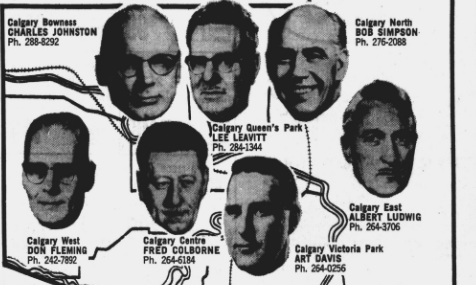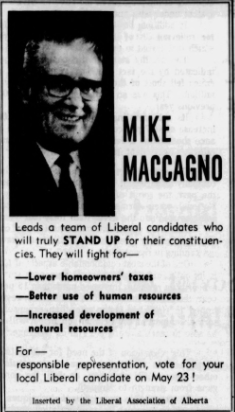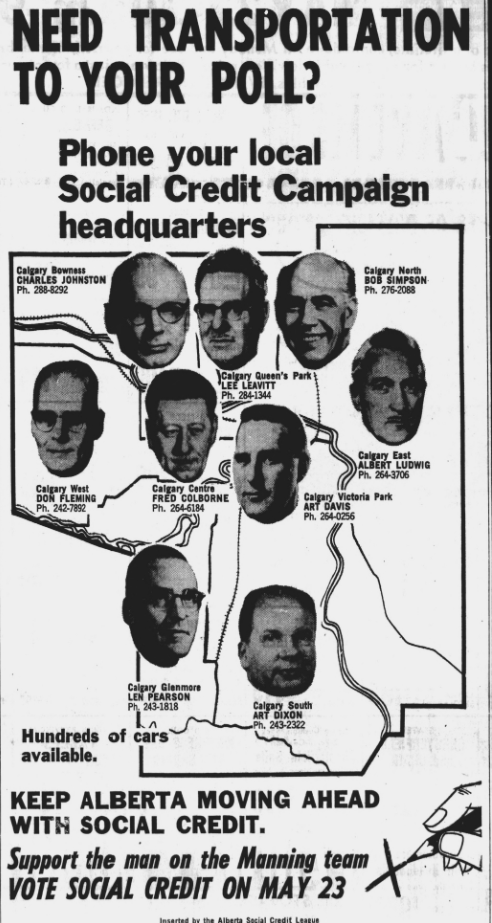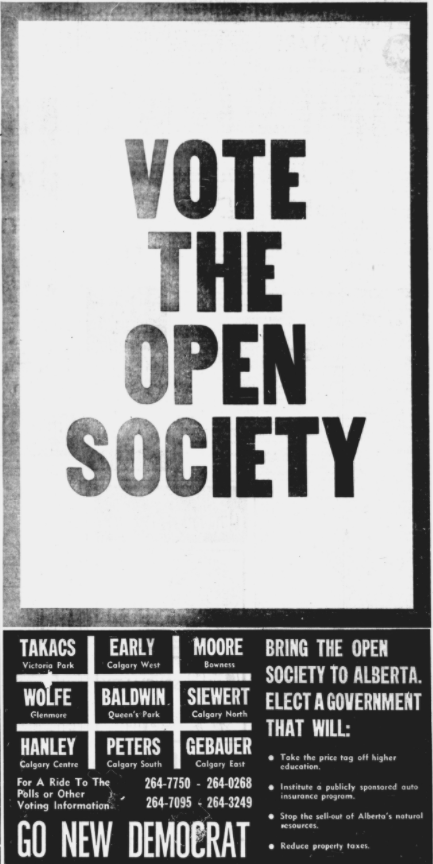Supporters of the Alberta Liberal Party will gather virtually this weekend for the party’s annual general meeting two years after the party was shut out of the Legislative Assembly for the first time in more than three decades.

This year also marks 100 years since the Liberal Party lost the 1921 election to the United Farmers of Alberta after governing the province since it was founded in 1905.
The Liberals formed the official opposition for most of the period from their defeat until the 1967 election, when the Progressive Conservatives led by Peter Lougheed knocked the Liberals to third place in the Legislature.
As the Liberals ponder what it means to be a seatless party in 2021, I took a look back at what happened the last time the Liberals were shut out of the Legislature.
The 1967 election marked the Liberal Party’s poorest showing in decades, and death, defection and resignation would mean the party’s three MLA caucus would not survive the full term.
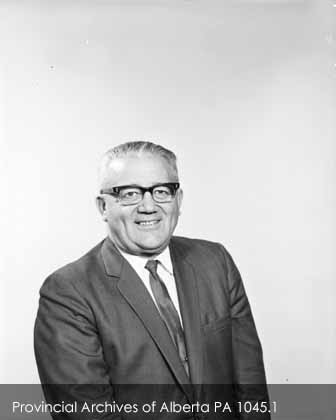
Party leader and Lac La Biche MLA Michael Maccagno resigned his seat in early 1968 to run in the federal election and later formally resigned as leader in October 1968. Edson MLA William Switzer died of a heart attack in June 1969. And in November 1969 the party’s sole remaining caucus member, Calgary-Glenmore MLA Bill Dickie, crossed the floor to join Lougheed’s PC Party.
The party was on the decline and faired poorly in the by-elections to replace Maccagno and Switzer, with Liberal candidates finishing third in Lac La Biche and fourth in Edson.
But that was not where this story of the Alberta Liberal Party’s ends.
Former United Church Minister Jack Lowery, who preached at Calgary’s Southwood United Church without collecting remuneration so he could work full-time as the public relations manager for ATCO Industries Ltd., was chosen as leader on April 26, 1969.
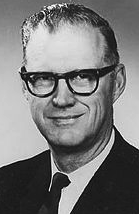
He was also the chief statistician for the Calgary Stampeder Football Club, where he led a team of analysts and technicians who tracked the CFL team’s performance. It is no wonder that Calgary Herald’s Johnny Hopkins described him in 1967 as someone who simply couldn’t find enough activities to fill all his waking hours.
With none of the party’s MLA entering the leadership race, Lowery defeated Town of Manning Mayor Don Branigan (who would later become Mayor of Whitehorse in Yukon), future party leader Bob Russell, and 20-year old University of Alberta political science student Trevor Midgley (who entered the race 8 minutes before the nomination deadline).
The 39-year old Lowery moved to Alberta after graduating from theology school in Toronto to serve churches in the Hardisty area and described himself as an “issues-oriented pragmatist” with a left-orientated slant on social development philosophy and “small conservative” financial ideas.
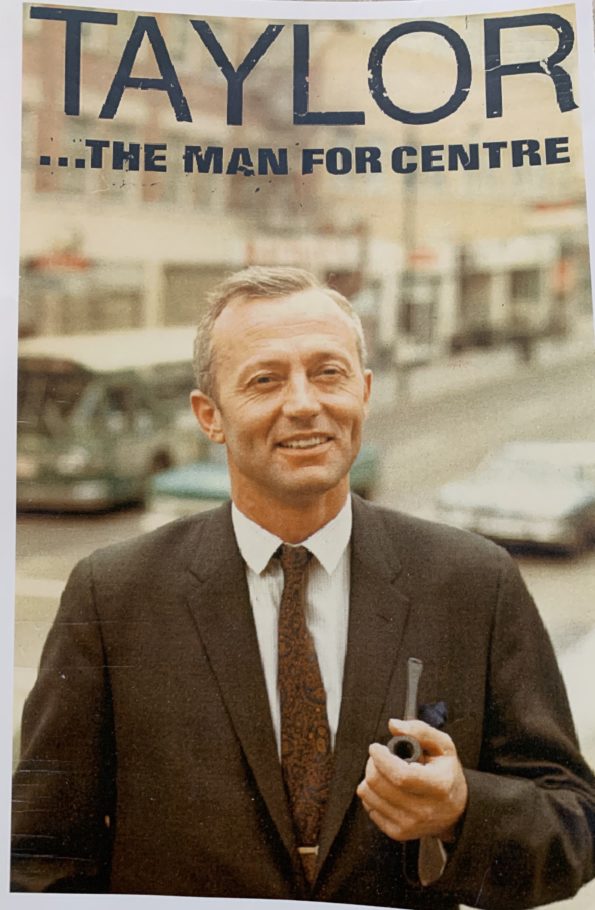
This was Lowery’s second foray into elected politics, having just the previous year mounted an unsuccessful campaign against oilman and school board trustee Nick Taylor for the federal Liberal nomination in Calgary-Centre (Taylor would go on to lead the Liberals back into the Legislature in 1986).
“It’s been said for a long time that there are those in the Liberal Party who have had a vested interest in defeat,” Lowery told Calgary Herald for the “Personality of the Week” column on May 30, 1969.
“They’ve been quite happy to go directly to Ottawa without having to work in a party structure that could go somewhere. All of these people will be encouraged to become party of the team,” Lowery said.

Lowery was an outsider who inherited the leadership of a deeply divided and cash poor party that was overshadowed by a flashier and increasingly unpopular federal Liberal Party led by Prime Minister Pierre Elliott Trudeau.
He was the Liberal Party’s third leader in five years following the resignation of Adrian Berry after nine months as leader in 1966 and the return of Maccagno as leader for a second time before Lowery was chosen.
Early on in his leadership he dismissed the chances of Lougheed’s PCs and pledged to reestablish the Liberals as the alternative to the long-governing Social Credit Party, which he described as “very long on promises and short on implementation.”
The decision by MLA Dickie to join the Lougheed PCs in November 1969 because of what he described as “leftist philosophy” in the Liberal Party meant the party no longer had any representation in Legislature.
“This merely clears the decks so that we can do the kind of building we’ve been wanting to do. I do not agree with him that we have a leftist philosophy,” said Lowery in response his Dickie’s defection.
But it all really started to unravel for Lowery when was revealed the next month that he had reached out to Social Credit Premier Harry Strom to either merge or create an electoral alliance between the two parties.
His fate was sealed.

“We can run candidates in the traditional sense in the next election. We can stand aside and let the Social Credit and Conservative partiee fight it out, or we can work with Social Credit to determine areas of mutual interest,” Lowery told the Calgary Herald on Dec. 30, 1969.
“We are 10 years away from being an effective political force and some form of coalition in which the Liberal party would retain its identity is one of the alternatives open,” Lowery said.
Calgary-South Liberal Member of Parliament Pat Mahoney, a former President of the Calgary Stampeders Football Club, said the idea should be pursued with an open mind.
“The Alberta Liberals have been unfairly burned by the identification with Ottawa and the necessity of supporting federal policies,” Mahoney told the Calgary Herald. “They have a right to pursue an independent course.”
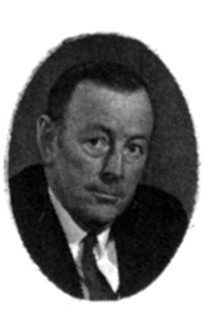
But Mahoney’s federal colleague from Edmonton had a different opinion. Edmonton-Strathcona Liberal MP Hu Harries called the proposal “bloody nonsense” and predicted it will not receive support from the Alberta Liberals membership.
Harries called on Lowery to resign and described talk of a Liberal-Socred alliance as a “selfish, stupid reaction to a complete failure” that was the Liberal Party’s inability to win the by-elections to replace the party’s former MLAs.
Prominent Edmonton Liberal and well-known publisher Mel Hurtig described the idea as absurd and clashed with Lowery at a party meeting in January 1970.
“Liberals are not people who are concerned with developing deals where they sell out their principles,” Hurtig was reported to have said.
Lowery defended his position by arguing that the merger discussions with the Socreds had “provoked interest and has given us an opportunity to delineate what we stand for as Liberals.”
But Harries and Hurtig were not alone. Constituency association presidents from across the province revolted against the idea – and Lowery.
And despite Lowery’s optimism, Strom’s own public response poured cold water on the entire idea of a Socred-Liberal alliance.
“We would be prepared to welcome those members of the Liberal party or any other party, who wish not join and work with us, but we are not at all interest in any deals or mergers,” Strom said.
The other opposition parties took it as an opportunity to welcome disaffected or confused Liberals into their camps.
Alberta New Democratic Party leader Grant Notley said his party would open wide the doors for disgruntled Liberals who wish to join “a genuine alternative to the conservative consensus of the Socreds and Tories.”
And Lougheed said any move toward a Liberal-Socred alliance would benefit his PC party.
“The last provincial election and the last two by-elections indicate that the majority of liberal-inclined voters would prefer to see a new progressive government in Alberta end 35 years of Social Credit control,” Lougheed said.
On February 16, 1970, only 10 short months after winning the leadership, Lowery resigned as leader of the Alberta Liberal Party.
He was replaced by the third-place finisher from the previous year’s leadership contest, Bob Russell.
A year later, Lowery re-emerged into the political spotlight to publicly announced he had left the provincial Liberals and was joining the Social Credit Party. He was soon after named the coordinator of the party’s Calgary campaign for the 1971 provincial election.
When the votes were counted on August 30, 1971, Lougheed’s PC Party had unseated the Socreds to form the first new government in Alberta since 1935. It was a political earthquake from which the Socreds would never recover.
And the Liberals remained shut out of the Legislature. The party’s vote dropped to 1.01 per cent and no where in Alberta did a Liberal candidate come close to winning election.
The Liberals would remain in the electoral wilderness in Alberta for the next 15 years.
(For more history about Liberal Party in Alberta during the 1960s and 1970s, check out Darryl Raymaker’s excellent book, Trudeau’s Tango. Alberta meets Pierre Elliott Trudeau).

